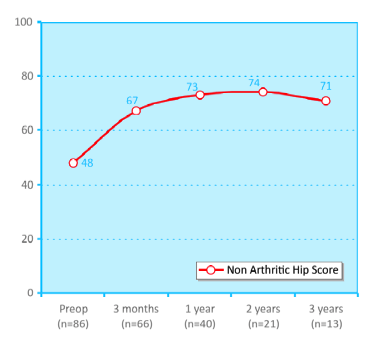Trochanteric Bursitis
Trochanteric pain as a result of bursitis and tendonitis is a major cause of complaint in women over the age of 40.
Patients often complain of pain over the buttock and are unable to sleep on the affected side.
Diagnosis is by clinical examination which will demonstrate exquisite tenderness over the posterior border of the greater trochanter. There may be pain and weakness on resisted abduction of the thigh.
Investigations include an ultra-sound scan which may show thickening and distension of the bursa with fluid. If a tear is suspected, then an MRI scan needs to be performed to assess the gluteal tendons.
Recommendations
Initial treatment is a series of corticosteroid injections placed into the bursa under ultrasound guidance.
Physical therapy plays an important role and is aimed at stretching the tensor fascia lata, and the gluteal muscles followed by a programme of gentle gluteal strengthening
In the absence of durable relief from conservative treatment surgical intervention can be considered, previously open procedures have provided unpredictable results. We have developed an endoscopic procedure to deal with these shortcomings.
Endoscopic Surgery
Endoscopic lengthening of tensor fascia lata and gluteus maximus together with trochanteric bursectomy is an effective and reliable procedure.
Through two key holes a cruciate incision is made in the affected tendons hence achieving a three-dimensional lengthening. The bursa is then excised with the use of an arthroscopic shaver.
Results
We have presented and published results of one of the largest series of endoscopic trochanteric surgery. The results demonstrate significant relief from pain and improvement in function.

Results of surgery for patients with trochanteric bursitis
